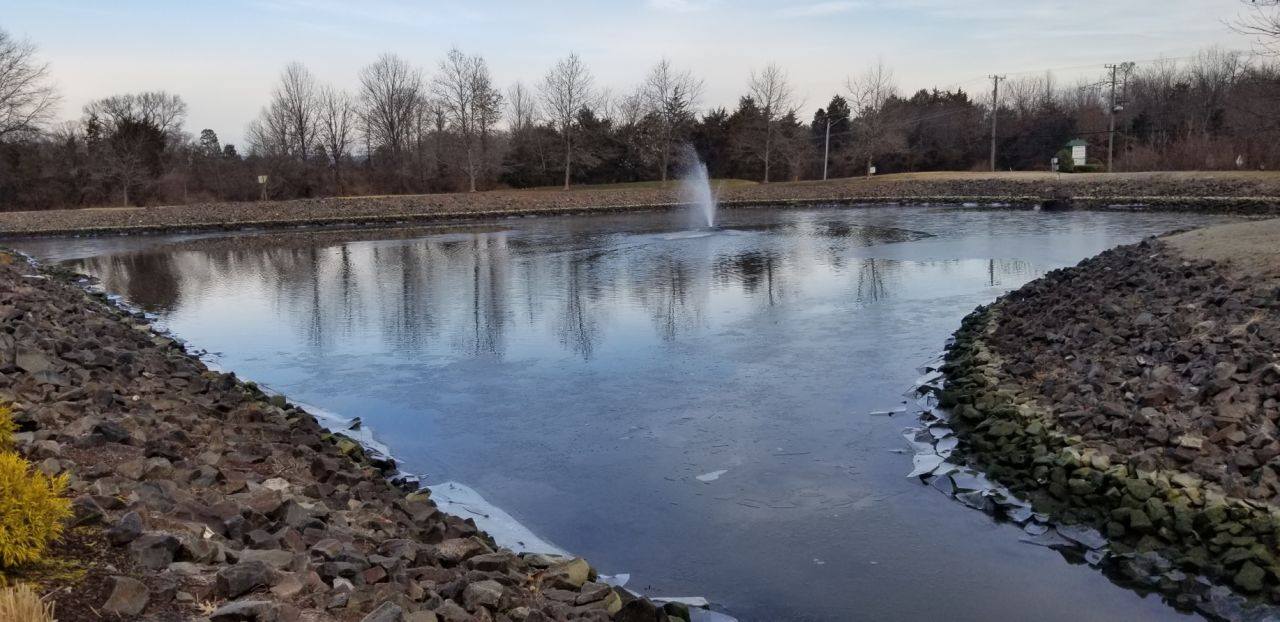Extreme weather has become a critical concern for more and more property owners. As such, it makes sense that stormwater facilities are taking center stage in storm-prone regions, like the Mid-Atlantic. These facilities play a pivotal role when it comes to preventing flooding, erosion, and water pollution in the event of a storm. Yet, stormwater facilities can only fulfill their functions when they receive regular inspection and maintenance.
After all, even the most robust stormwater system can succumb to the effects of time, extreme weather, and wear and tear. So, to prevent this from happening, you need to be proactive and learn to identify the warning signs that indicate it’s time for an inspection and maintenance. Not sure what to look out for? Our in-house experts at Muller, Inc. have helped produce this simple guide to help you spot the stormwater facility red flags.
Structural Integrity: The Foundation of Functionality
The foundation of any stormwater facility’s efficiency lies in its structural integrity. Erosion, cracks, settling, or any visible signs of damage to components of the facility should be addressed as a priority. Some of the components you want to check regularly include pond slopes, pipes, and channels.
Indeed, these structural vulnerabilities can dramatically compromise the function of your stormwater facility, affecting its ability to manage excess water flow. This could lead to potential flooding, which will inevitably affect the area that should be protected by the stormwater facility. From environmental harm to devastating property damage, this is not a risk you want to take. Therefore, as soon as you can spot minor changes in the structure, you want to reach out to our experts for stormwater maintenance.
Sediment Accumulation: Weighing Down the Function
The accumulation of sediment is a recurring challenge for stormwater facilities management. Sediment buildup is unavoidable, so you want to keep an eye on your facility. Over time, the buildup will reduce the ability to retain sediment effectively. This will have a double effect, both on the overall stormwater facility’s performance, but also on the water quality.
As a rule of thumb, we recommend performing routine sediment removal as part of stormwater maintenance services. This will restore the retention functions of the facility.
Invasive Vegetation & Vegetative Cover
Vegetation can play both a helpful and a damaging role within stormwater facilities. Healthy vegetation can act as a wonderful natural defense against erosion and sedimentation in your facility and improve water quality. As such, insufficient plant cover could expose the stormwater facility to erosion risks and limit its ability to treat stormwater.
On the other hand, the presence of invasive species can have a negative impact on the overall system’s performance, leading to blockages, for example.
As such, it is important to keep your eyes peeled for vegetation-related issues that may hinder the overall performance as part of the maintenance services. These could be either the lack of plant cover, or the excessive presence of unwanted species.
Damaged Outlet Control Structures
The outlet structure refers to pipes, control valves, weirs, etc. Their function is central to the performance of the stormwater facilities and, therefore, takes priority during stormwater maintenance. Some of the signs of damage or issues you are looking for include:
- Blockages
- Visible signs of damage
- Backups
- Unexplainable malfunctions in the system
When an outlet control structure fails to work properly, this can disrupt the normal flow of water, which can cause not only flooding but also significant changes in the water quality. We strongly recommend taking action as soon as you notice anomalies with the outlet control system.
Changes in Water Quality
Perhaps, the first sign that you need stormwater maintenance is when the water quality changes. Regular water quality testing is important to keep track of your stormwater facility’s performance. But in many cases, you can easily detect anomalies without specialist equipment. Anomalies in water quality can look like changes in color or clarity, the presence of a smell, or even an increase in turbidity. Turbidity is the cloudiness of the water.
Timely detection will enable you to take the appropriate remediation measures to fix your facility and prevent it from compromising the integrity of local water sources and ecosystems.
Presence of Debris
The accumulation of debris and trash can obstruct water movement and affect the overall functioning of the stormwater facility. These can cause blockages in the structure, which puts the facility at risk of flooding the surrounding areas. Routine cleanups and regular stormwater maintenance will ensure proper operation and remove all debris.
Schedule Preventative Stormwater Maintenance
Falling behind stormwater maintenance can have dire consequences. Thankfully, these signs can help you notice the need for stormwater structure inspection. At Muller, Inc., we work hand-in-hand with you to prioritize timely maintenance so stormwater facilities can continue to serve as guardians of our environment for generations to come. Contact our team at 703-560-4040 or visit us on our website to schedule an inspection with our experts.

